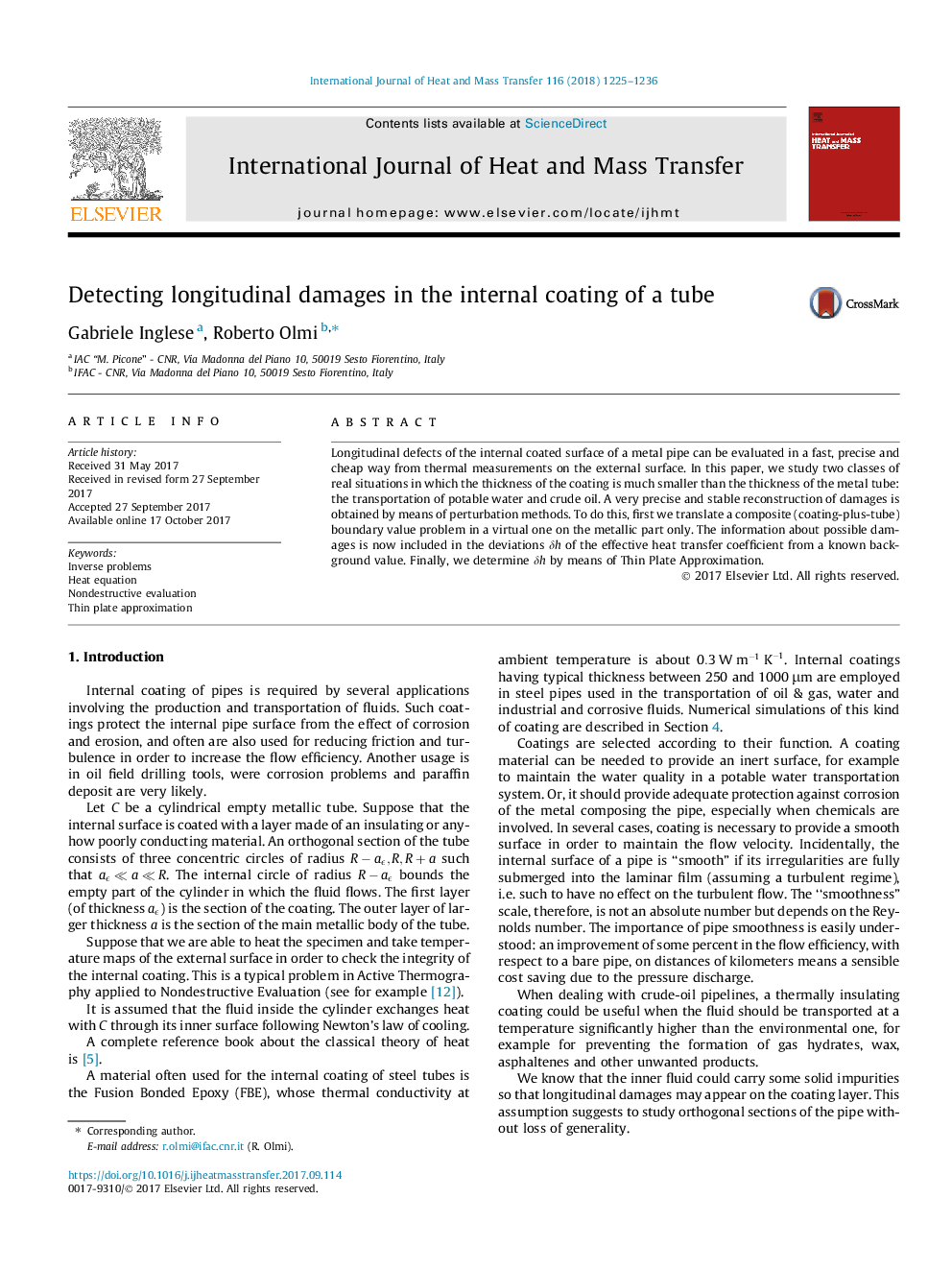| Article ID | Journal | Published Year | Pages | File Type |
|---|---|---|---|---|
| 4993834 | International Journal of Heat and Mass Transfer | 2018 | 12 Pages |
â¢A procedure using thermography for detecting logitudinal damages in pipeline internal coatings is described.â¢An inversion method is developed, translating the actual boundary condition in a Robin condition on the bare metal.â¢The coating thickness is obtained in terms of a virtual heat transfer coefficient by thin plate approximation.â¢The procedure is very fast, reliable and computationally cheap.
Longitudinal defects of the internal coated surface of a metal pipe can be evaluated in a fast, precise and cheap way from thermal measurements on the external surface. In this paper, we study two classes of real situations in which the thickness of the coating is much smaller than the thickness of the metal tube: the transportation of potable water and crude oil. A very precise and stable reconstruction of damages is obtained by means of perturbation methods. To do this, first we translate a composite (coating-plus-tube) boundary value problem in a virtual one on the metallic part only. The information about possible damages is now included in the deviations δh of the effective heat transfer coefficient from a known background value. Finally, we determine δh by means of Thin Plate Approximation.
